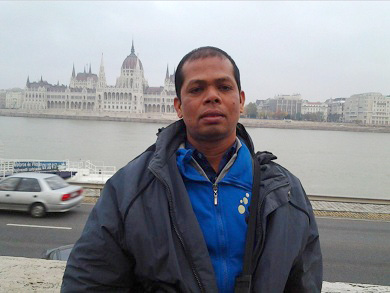Territorial Approach to Spatial Dynamics Based on Posuo and Kawia Tradition of the Labalawa Community of Baubau City
Abstract
This study aims to identify and analyze space territories in the kawia traditions of the Labalawa community. The method used in this research is descriptive qualitative by analyzing the results of the identification of the formation of territory based on changes in shape, size, boundaries, and space components, sampling was carried out by purposive sampling with the criteria of house types of Banua tada and stone houses and differences in the availability of space on the object of observation. The results showed that the space territory was dominated by semi-fixed elements and non-fixed elements, changes in the function of space during the posuo and kawia tradition from day to day were more dominated by public functions, and the condition of adding space called kaompu with the stage form was more influenced by factors availability of open space and also because of the tradition of building the Labalawa community which is practiced from generation to generation through the posuo and kawia tradition.
Keywords
Full Text:
PDFReferences
Adimihardja, K., & Salura, P. (2004). Architecture within the framework of culture. Architecture & Communication;
Alifuddin M , (2015). “The significance of the posuo cycle ceremony in building universe personality teenager woman on Public Buton”, AL-IZZAH, Volume 10, Number 1.
Altman, I. 1975, The Environment and Social Behavior. Monterey, CA: Wadsworth.
Anisa. 2012). Sustainability and Spatial Change in the Kudus Traditional House; NALARs Volume 11 No. 1
Barliana, S. (2010) Architecture, Community and Social Capital, Metatexture of Discourse Publishers, Bandung.
Bau-Bau City Regional Regulation (PERDA) Number 2 the Year 2009
De Certeau, Michel. "Part III: Spatial Practices" The Practice of Everyday Lie. Steven Rendall, trans. Berkeley: University of California Press, 1984. 91-130
Habraken, NJ, 1982, Transformation of the Site, Cambridge, Massachusetts Summer.
J. Moleong Lexy. 2014. Qualitative Research Methods, Revised Edition. PT Teen Rosdakarya Bandung
Laurens, JM (2005), Architecture and Human Behavior; Grasindo, PT Gramedia
Marti, Manuel, Jr. 1993. Space Operational Analysis. USA: PDA Publisher Corporation.
Nurmayanti, Y. & Wulandari, LD, Nugroho, AM, 2017. Changes in the Space of a House Based on the Tradition of the Javanese House of Pnaragan in Kaponan Village . Journal of Langkau Betang Vol.4 No.1
Purba, N. (2020). The Use of Simalungun Language by Anak Boru Sanina in the Simalungun Wedding Ceremony (Sociolinguistic Studies). Lakhomi Journal: Scientific Journal of Culture. 1-7
Rapoport, A. 1977. Human Aspects of urban form: Toward man-environment approach to urban form and design. Oxford: Pergamon
Ronald, Arya, 2007. Lecture Notes on Cultural Anthropology. Yogyakarta. Post-Graduate Department of Architectural Engineering UGM.
Rr. Putri, Pangaea.GW, Ernawati, J 2012. Space Flexibility in Tradition Sinoman and Biyada in Karang Ampel Hamlet, Malang; DIMENSI (Journal of Architecture and Built Environment), Vol. 39, No. 2, 65-76 ISSN 0126-219X
Shahada RM, (2014). Preservation of the Historical Landscape of Indonesian Heritage Cities in Southeast Sulawesi Province. Thesis (Undergraduate) Postgraduate School of Architecture - IPB, Bogor
Sholehah, Antariksa, Wulandari. LD 2014. Spatial Arrangement in the Sembau House Building of the Bulungan Tribe in Tanjung Palas, North Kalimantan ; Journal of architectural perspective Vol.9 No.1
Umar MZ, Faslih, A., Rosyidah, S. (2018). The Identity of Buton Traditional Maradika House in Baubau City. DIMENSION - Journal of Architecture and Built Environment Vol. 45. No. 1, p.55–62
DOI: https://doi.org/10.33258/birci.v5i3.6143
Article Metrics
Abstract view : 43 timesPDF - 12 times
Refbacks
- There are currently no refbacks.

This work is licensed under a Creative Commons Attribution-ShareAlike 4.0 International License.

This work is licensed under a Creative Commons Attribution-ShareAlike 4.0 International License.

_.gif)

















_.gif)



